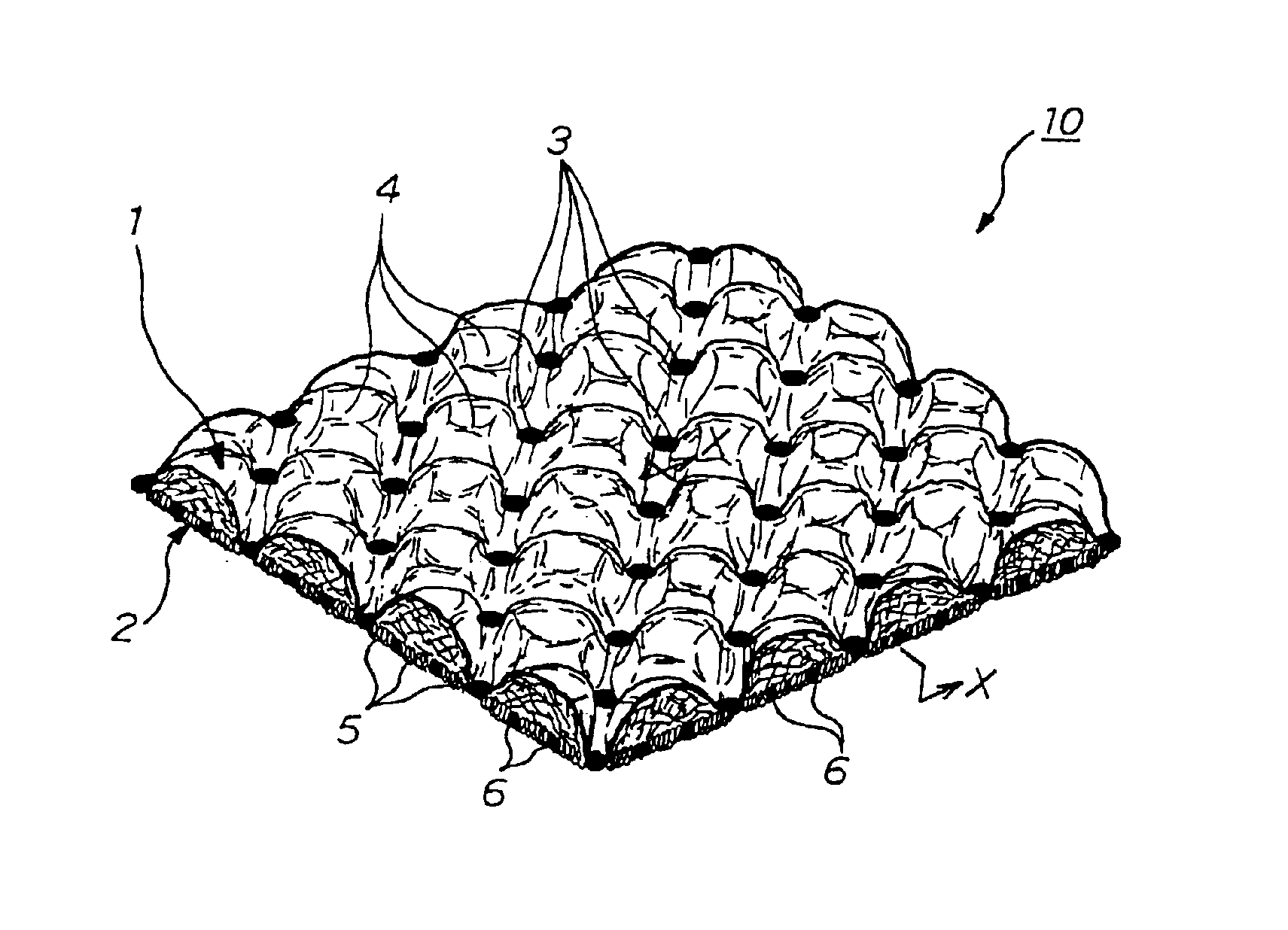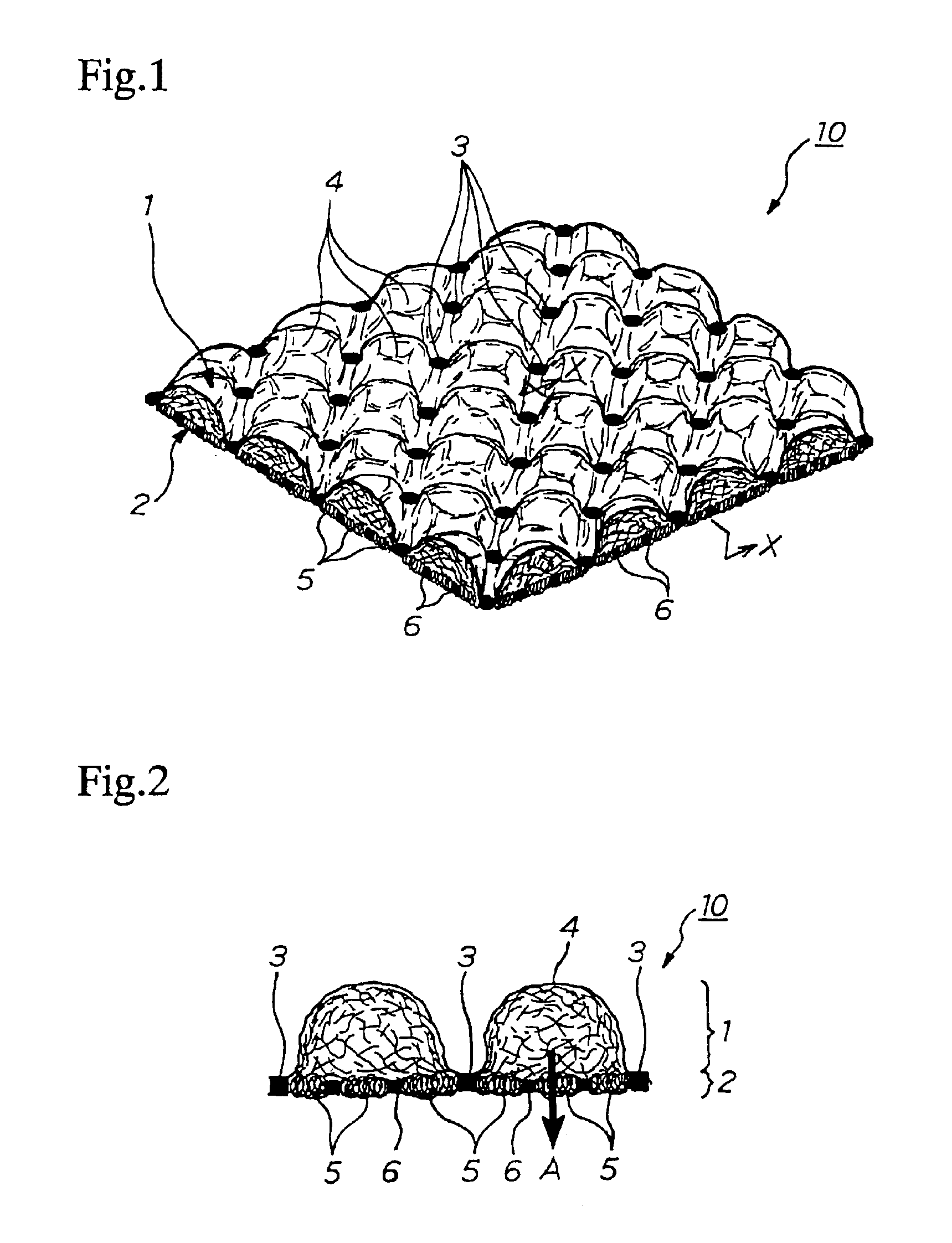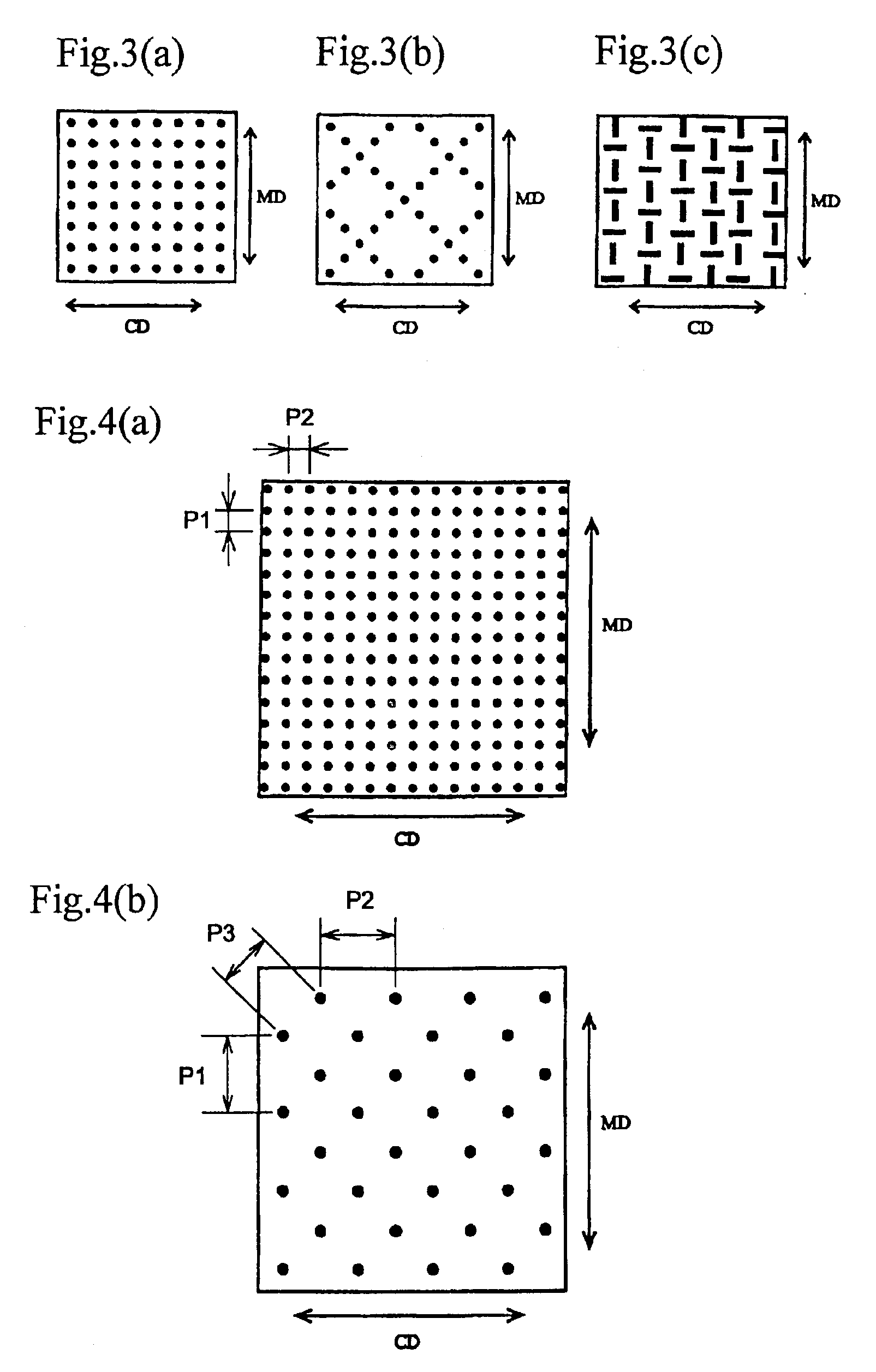Topsheet for absorbent article
a technology of absorbent articles and topsheets, applied in the field of topsheets, can solve the problems of affecting the color of remaining blood, lack of sufficient softness of whole sheets, and overhydration or skin troubles, and achieve the effect of hardly bunching up or wrinkles
- Summary
- Abstract
- Description
- Claims
- Application Information
AI Technical Summary
Benefits of technology
Problems solved by technology
Method used
Image
Examples
example 1
(1) Preparation of First Fiber Layer-Forming Material
[0111]Heat bondable core-sheath conjugate fiber consisting of a polyethylene terephthalate core and a polyethylene sheath at a core / sheath weight ratio of 5 / 5 and having a fineness of 2.2 dtex and a fiber length of 51 mm (NBF-SH, available from Daiwabo Co., Ltd.; hereinafter referred to as non-shrinkable fiber A) was carded into a web and heat treated at 120° C. to prepare a nonwoven fabric having a basis weight of 15 g / m2.
(2) Preparation of Second Fiber Layer-Forming Material
[0112]Self-crimping fiber which was heat shrinkable core-sheath conjugate fiber consisting of an ethylene-propylene random copolymer (EP) core and a polypropylene ](PP) sheath and having a fineness of 2.2 dtex and a shrinkage starting temperature Ts of 90° C. (available from Daiwabo Co., Ltd.; hereinafter referred to as shrinkable fiber B) was carded into a web. The web was embossed through a heat embossing machine composed of an engraved roll and a smooth ro...
example 2
[0116]Non-shrinkable fiber A and shrinkable fiber B were mixed at an A:B weight ratio of 85:15. The mixed fiber was carded into a web, which was heat treated at 120° C. to prepare a nonwoven fabric having a basis weight of 15 g / m2 as a first fiber layer-forming material. A topsheet was produced in the same manner as in Example 1, except for using the resulting first fiber layer-forming material.
example 3
[0117]Non-shrinkable fiber A and shrinkable fiber B were mixed at an A:B weight ratio of 70:30. The mixed fiber was carded into a web, which was heat treated at 120° C. to prepare a nonwoven fabric having a basis weight of 15 g / m2 as a first fiber layer-forming material. A topsheet was produced in the same manner as in Example 1, except for using the resulting first fiber layer-forming material.
PUM
| Property | Measurement | Unit |
|---|---|---|
| Percent by mass | aaaaa | aaaaa |
| Percent by mass | aaaaa | aaaaa |
| Percent by mass | aaaaa | aaaaa |
Abstract
Description
Claims
Application Information
 Login to View More
Login to View More - Generate Ideas
- Intellectual Property
- Life Sciences
- Materials
- Tech Scout
- Unparalleled Data Quality
- Higher Quality Content
- 60% Fewer Hallucinations
Browse by: Latest US Patents, China's latest patents, Technical Efficacy Thesaurus, Application Domain, Technology Topic, Popular Technical Reports.
© 2025 PatSnap. All rights reserved.Legal|Privacy policy|Modern Slavery Act Transparency Statement|Sitemap|About US| Contact US: help@patsnap.com



